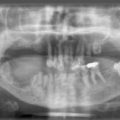4] and NEMA 2007 [
Spatial resolution. This is the ability to distinguish an object from its surroundings and is a measure of the sharpness of the image. It is defined by a full width half maximum distance and this is about 3 mm for the intrinsic (no collimator) resolution of a current gamma camera.
Sensitivity. This term relates to the number of gamma events per MBq detected by the gamma camera. Described above is the influence the collimator has on the spatial resolution and sensitivity of a gamma camera.
Uniformity. This refers to the variations in count rate across the field of view when the detector is exposed to a uniform source of a gamma ray emitting radionuclide.
Linearity and energy response. These refer to the gamma camera’s ability to determine the true location and energy of a gamma ray detected anywhere in the field of view. These are the fundamental parameters that influence detector uniformity.
Energy resolution. Statistical variations in the detection of gamma rays by the crystal and photomultiplier assembly result in a characteristic broadening of the total absorption peak of the energy spectrum. Energy resolution is defined by an energy Full Width Half Maximum.
Multiple window registration. This refers to the ability of the gamma camera to determine the location of a detected gamma event as a function of its energy.
Corrections can be made during data acquisition to overcome some of the non-random defects in camera performance. These include corrections for non-uniformity of sensitivity, non-uniformity of energy resolution, and non-linearity.
There are additional performance characteristics to take into account when performing SPECT imaging and still further with SPECT/CT. SPECT imaging requires the centre of rotation (COR) of the rotating camera heads to be within predefined limits. Failure to do so will result in artifacts on the reconstructed SPECT images. It is also important that the parameters defining the detector heads remain stable at every angle of rotation. SPECT/CT relies on the accurate registration of the SPECT and CT images. The performance of the CT is assessed as for all CT equipment, as covered by IPEM Report 91 [
Stay updated, free articles. Join our Telegram channel

Full access? Get Clinical Tree




